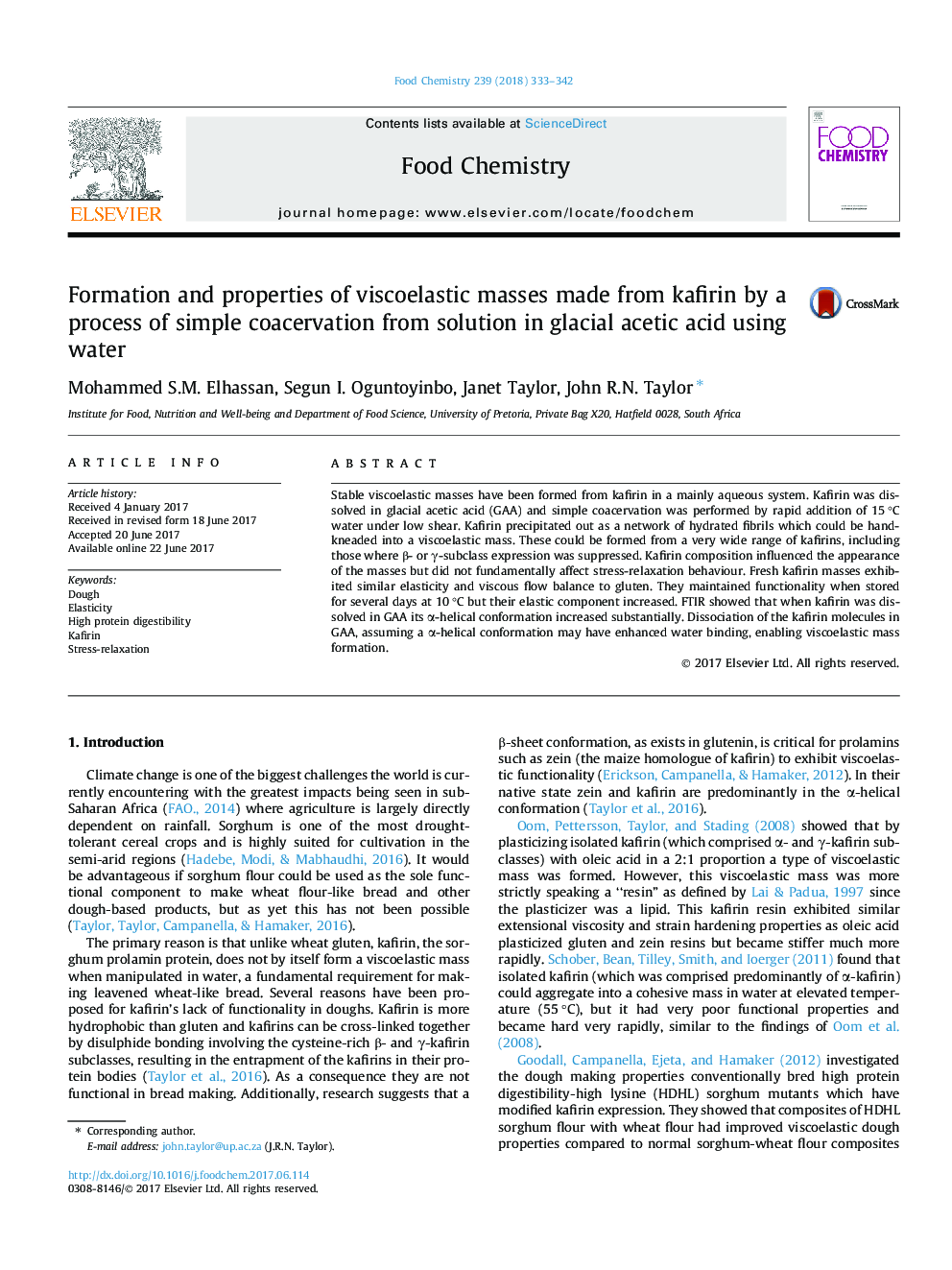| Article ID | Journal | Published Year | Pages | File Type |
|---|---|---|---|---|
| 5132977 | Food Chemistry | 2018 | 10 Pages |
â¢Kafirin viscoelastic masses can be formed by coacervation from glacial acetic acid.â¢Viscoelastic mass formation was achieved by rapid addition of water with low shear.â¢Viscoelastic masses could be formed from kafirins differing in their subclasses.â¢Glacial acetic acid greatly increased kafirin α-helical conformation.â¢Viscoelastic masses maintained their functional properties when stored at 10 °C.
Stable viscoelastic masses have been formed from kafirin in a mainly aqueous system. Kafirin was dissolved in glacial acetic acid (GAA) and simple coacervation was performed by rapid addition of 15 °C water under low shear. Kafirin precipitated out as a network of hydrated fibrils which could be hand-kneaded into a viscoelastic mass. These could be formed from a very wide range of kafirins, including those where β- or γ-subclass expression was suppressed. Kafirin composition influenced the appearance of the masses but did not fundamentally affect stress-relaxation behaviour. Fresh kafirin masses exhibited similar elasticity and viscous flow balance to gluten. They maintained functionality when stored for several days at 10 °C but their elastic component increased. FTIR showed that when kafirin was dissolved in GAA its α-helical conformation increased substantially. Dissociation of the kafirin molecules in GAA, assuming a α-helical conformation may have enhanced water binding, enabling viscoelastic mass formation.
